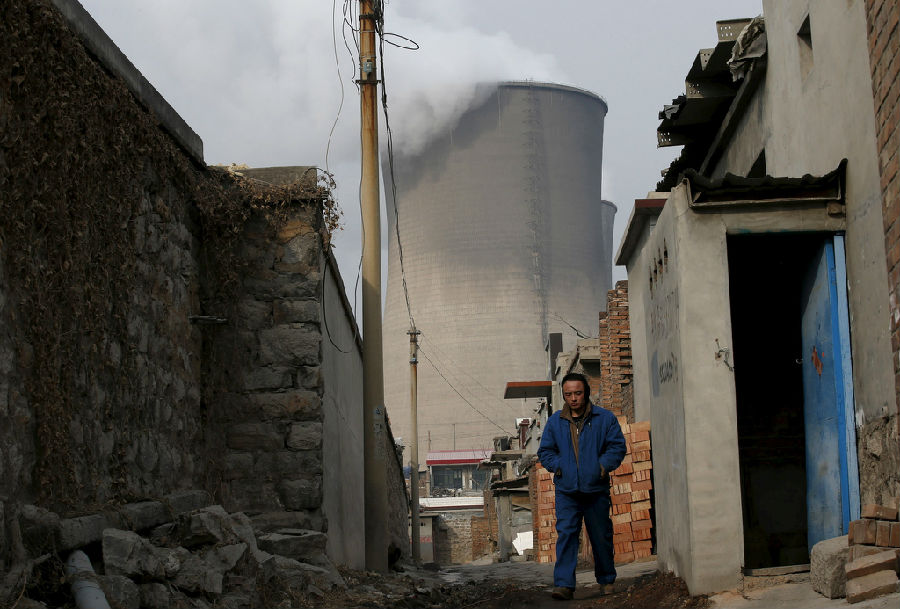“The main reason why coal sticks around is, we built it already,” said Rohit Chandra,
“煤炭之所以挥之不去,主要原因在于我们已经对它产生了依赖性,”罗希特·钱德拉说,
who earned a doctoral degree in energy policy at Harvard, specializing in coal in India.
钱德拉是哈佛大学能源政策博士毕业,专攻的是印度煤炭方向。
The battle over the future of coal is being waged in Asia.
关于煤炭未来的争论正在亚洲上演。
The world’s coal juggernaut
世界煤炭巨头
Home to half the world’s population, Asia accounts for three-fourths of global coal consumption today.
亚洲拥有半数世界人口,其煤炭消耗量则占到了当今全球消耗总量的四分之三。
More important, it accounts for more than three-fourths of coal plants that are either under construction or in the planning stages —
更重要的是,亚洲的煤电厂,无论是在建的还是还在规划当中的,也占到了世界煤电厂总数的四分之三。
a whopping 1,200 of them, according to Urgewald, a German advocacy group that tracks coal development.
据追踪煤炭开发的德国倡议组织Urgewald透露,亚洲的煤电厂数多达1200个。
Heffa Schücking, who heads Urgewald, called those plants “an assault on the Paris goals.”
Urgewald的负责人赫法·舒金称,那些煤电厂“简直就是践踏《巴黎协定》的宗旨。”
Indonesia is digging more coal.
当下,印尼在挖掘更多的煤炭。
Vietnam is clearing ground for new coal-fired power plants.
越南在为新的燃煤发电厂扫清障碍。
Japan, reeling from 2011 nuclear plant disaster, has resurrected coal.
日本,刚从2011年的核电厂灾难中复苏,就又扶正了煤炭的地位。
The world’s juggernaut, though, is China.
然而,主宰世界煤炭消耗的,还是要数中国。
The country consumes half the world’s coal.
全世界有半数煤炭都是中国消耗掉的。
More than 4.3 million Chinese are employed in the country’s coal mines.
中国有超430万人从事煤炭开采工作。
China has added 40 percent of the world’s coal capacity since 2002, a huge increase for just 16 years.
自2002年以来,中国让世界煤炭产能增加了40%,就短短16年的时间来看,这一幅度可谓十分巨大了。
“I had to do the calculation three times,” said Carlos Fernández Alvarez, a senior energy analyst at the International Energy Agency.
“我算了三次才敢相信,”国际能源署高级能源分析师卡洛斯·费尔南德斯·阿尔瓦雷茨说到。
“I thought it was wrong. It’s crazy.”
“我以为我算错了。简直是难以置信。”

Spurred by public outcry over air pollution,
受公众对空气污染的强烈抗议的影响,
China is now also the world leader in solar and wind power installation,
中国在安装太阳能和风能装置方面走到了世界前列,
and its central government has tried to slow down coal plant construction.
其中央政府也在努力减缓煤电厂的建设。
But an analysis by Coal Swarm, a U.S.-based team of researchers that advocates for coal alternatives,
不过,提倡使用煤炭替代品的美国研究小组“全球煤炭研究网络”
concluded that new plants continue to be built, and other proposed projects have simply been delayed rather than stopped.
的分析表明,中国仍在继续建设新的煤电厂,其他拟议的项目也只是被推迟了,并没有真正停止。
Chinese coal consumption grew in 2017, though at a far slower pace than before, and is on track to grow again in 2018, after declining in previous years.
2017年,中国煤炭消耗有所增长,虽然速度已经远低从前,2018年,中国的煤炭消耗应该还会继续增长,虽然2017年前的过去几年一直在下降。
China’s coal industry is now scrambling to find new markets, from Kenya to Pakistan.
中国的煤炭行业正在拼命寻找新市场,从肯尼亚到巴基斯坦一个都不放过。
Chinese companies are building coal plants in 17 countries, according to Urgewald.
据Urgewald透露,中国公司正在17个国家建设燃煤电厂。
Its regional rival, Japan, is in the game too:
其区域竞争对手日本也没闲着:
nearly 60 percent of planned coal projects developed by Japanese companies are outside the country, mostly financed by Japanese banks.
日本公司规划的煤炭项目有将近60%都在国外,而那些项目大多都有日本银行提供的资金支持。
译文由可可原创,仅供学习交流使用,未经许可请勿转载。


